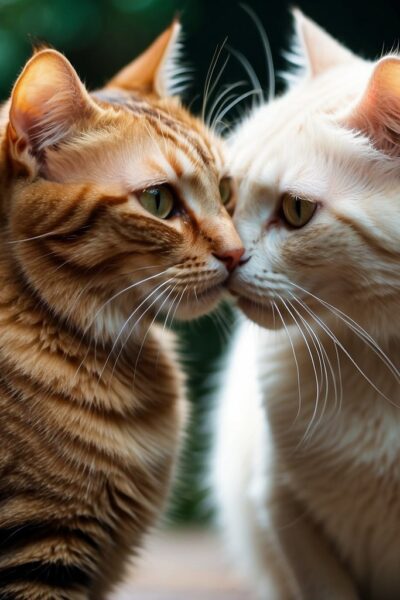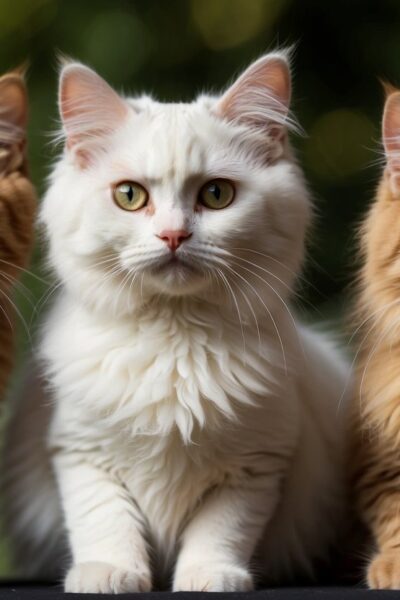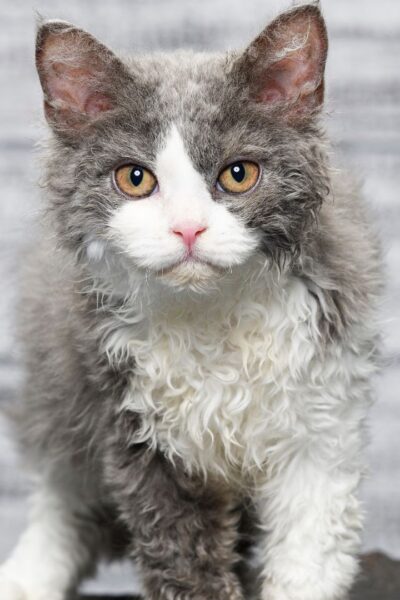Do Cats Get Cold? cat Temperature Sensitivity Cats, much like humans, have a physiological response to cold weather and can indeed feel cold. While their fur provides some insulation, it is not foolproof against all types of cold exposure. Understanding a cat’s comfort level with various temperatures is essential, especially when considering environmental conditions and how they affect domesticated cats….
Read More
Why Cat’s Fur Stands Up
Why Cats’ Fur Stands Up: Piloerection When observing feline behavior, one phenomenon that often piques interest is piloerection, the process where a cat’s fur stands up. This remarkable reaction is caused by tiny muscles located at the base of each hair follicle, known as the arrector pili muscles. These muscles contract under a variety of circumstances, often in response to…
Read More
Long-Haired Cat Breeds
Cat Breeds with long hair Long-haired cat breeds offer a diverse range of options for prospective cat parents, each with their own unique set of characteristics and history. Known for their luxurious coats, breeds such as the Maine Coon, Persian, and Norwegian Forest Cat have a distinctive appearance and require specific grooming needs. These cats possess a natural elegance and…
Read More
Long-Haired Cat Names
names for long-haired cats Selecting the perfect name for a long-haired cat can be a delightful yet daunting task. These cats, with their luxurious fur and elegant appearance, deserve names that embody their unique charm and personality. From the silky Persians to the majestic Maine Coons, long-haired cats are a diverse group, each with a distinctive mane that might inspire…
Read More
Marbled Cat: Small Elusive Cat
Marbled Cat Conservation The Marbled Cat (Pardofelis marmorata) is a small, elusive feline species that garners attention for its striking coat pattern reminiscent of the larger, more famously patterned big cats. Native to Southeast Asia, this forest-dwelling felid inhabits a range of habitats including primary and secondary forests. Despite sharing physical similarities with the well-known clouded leopards, marbled cats are…
Read More
Iriomote Cats: Japan’s Island Cats
Iriomote Cats: Preserving Japan’s Island cats Iriomote cats, a rare and fascinating feline species, are found exclusively on the Japanese island of Iriomote in the Okinawa Prefecture. These cats are critically endangered and are subject to a variety of conservation efforts aimed at ensuring their continued existence. They are a subspecies of the leopard cat, known scientifically as Prionailurus bengalensis…
Read More
Allogrooming: Why Do Cats Groom Each Other?
why Cats Groom Each Other: cat Social Behavior Cats groom each other in a behavior known as allogrooming, a complex activity that serves multiple functions in the feline world. This social grooming is not only about cleanliness but also about establishing social bonds between cats. It’s commonly observed in cats that are familiar and comfortable with each other, wherein they…
Read More
Cat Hierarchies: Cat Social Structures
Understanding cat Social Dynamics Understanding cat hierarchies and social structures offers fascinating insights into their behavior both in the home and the wild. While often perceived as solitary animals, domestic cats can exhibit complex social dynamics, particularly when they live in multi-cat households or as part of community cat colonies. Hierarchical dynamics play a significant role in how cats interact…
Read More
LaPerm Cats: Unique Curly Coats
LaPerm Cats: Unusual Curly Coat cats The LaPerm is a captivating cat breed distinguished by its unusual curly coat, originating from a genetic mutation. Recognized for their friendly demeanor and sociable nature, these feline companions display a unique charm that sets them apart. Their coats can be either long or short, but always maintain that signature wave or curl which…
Read More
Curly Haired Cat Breeds
Cat Breeds with Curly Fur: Curly-haired cat breeds, such as the Selkirk Rex, Devon Rex, Cornish Rex, and LaPerm, offer a playful twist on the traditional feline coat with their unusual texture and pattern. These breeds are not only a visual delight but often come with distinctive personalities that can inspire creative naming. Owners may opt for names that highlight…
Read More
Curly Cat Whiskers
Curly Cat Whiskers: Curly cat whiskers are relatively uncommon but can be a distinctive characteristic of some feline breeds, most notably the Cornish Rex. These whiskers, or vibrissae, are an essential part of a cat’s sensory system, playing a significant role in spatial navigation and environmental interaction. Unlike the straight whiskers found in most cats, curly whiskers can sometimes appear…
Read More
Cats With Curly Fur
Cats with Curly Fur Cats with curly fur stand out in the feline world with their distinctive, wavy coats that offer a unique tactile experience and a charming appearance. While most cats have straight fur, a select few breeds are renowned for their curly coats, which are a result of specific genetic mutations. These breeds include the Selkirk Rex, known…
Read More
Famous Black Cats: Film, Literature and TV
Black Cats in Pop Culture Across various cultures and through the annals of history, black cats have occupied a fascinating position in society. Often shrouded in superstition, they are creatures that have been both feared and revered, omens of misfortune and harbingers of good luck. In the modern era, famous black cats have transcended their mythological roots to become icons…
Read More












